mdiehl
Posts: 5998
Joined: 10/21/2000
Status: offline

|
Joe Foss was interviewed by MSoft about WW2 fighting in general. Lots of interesting stuff in that interview. I'll provide the link. I've selected some of the text pertaining to life at Henderson Field... ya'll "know" of course by now that Lunga was the garden party spot of the Pacific War where pilots had long lazy afternoons with tea and mixed drinks and night time was pure refreshing sleep.
http://www.microsoft.com/games/combatfs2/articles_foss.asp
On being strafed and bombed...
quote:
They could see everything, you know. And they strafed, and there's nothing we could do. Absolutely we were pinned down, and the anti-aircraft weren't that good, and I can imagine it could make you nervous if you're under that kind of blitz. You wouldn't want to stand up there and man your gun too well, because it wasn't too safe.
There was no safe place on the island there. And [the Japanese] thought, in both cases, that they could come in on there, but they'd have gotten a good reception of course. Then they better have some tough bozos leading the attack, but they really thought they had us at that time.
...
On accelerated deterioration of F4F engines under the conditions...
quote:
We couldn't, number one, start back on the ground. If the airplane was shot up, you aren't going to go anyplace, and those guys fixed those suckers so that they would go. They would have to change the engine, which in those days only lasted 70-some hours, because you were flying full throttle and on take-off and anytime the plane was running it would suck that coral into the tank, and that would just like filing the cylinders, your piston rings and all would go out in a hurry.
...
On not typically having positional advantage over the Zeroes even with coastwatcher warning (why I call it a "meeting engagement" rather than a "handicapped zero")
quote:
Yeah. You see, on a scramble, you go full speed. Altitude advantage was the name of the game. And if you didn't get up there they were coming down on you, and they did. We went at it day after day, where they had the advantage
. The only thing we had to let us know they were coming was the coast watchers up the line. See, there's a great story about that. There's a book called The Coast Watchers. Ever read that?
...
Other stuff..
quote:
My CO, Major Davis, Duke Davis flew the same day he was wounded in the morning, and he flew that same day. He got hit on the side of the face, the right arm, and the right leg a little bit. The shrapnel was dug out and he had all this swelling, and taped up face, and here he was went right back up in combat, the same day.
...
On ammo load out for the .50cal
quote:
I think that the biggest problem was that I had at least, and I think a lot of others have the same thing, we shot out of range. The airplane looked bigger, and if you shot at a Zero out of range, on a deflection shot, he was gone. He just saw those tracers, see, we loaded one tracer, one armor piercing and two incendiary. Any way you wanted to load.
More from a WW2 interview. Again, note that the F4Fs did not typically have positional advantage even with cw warning and radar.
http://www.microsoft.com/games/combatfs2/articles_foss_wartime.asp
quote:
So whenever we'd see about six [Japanese] planes that seemed to want to engage us, we were quite sure they had plenty of high cover. If the fighting was on even terms, they weren't at all anxious to engage us. But whenever they had the long end of the deal, they were anxious to engage. Along with the bombers there would be six to eight more Zeros. They'd fly to the rear and above, about 3,000 feet above the bombers, doing loops and slow rolls, to slow them down so they could stay with the bombers. They were usually up around 30,000 feet. Then there were another six just prowling around. You never could tell where they were; they would circle wide and try to come in from the opposite direction.
When I got there, we seemed to be getting off late. The [Japanese] got wise to the fact that if they made a circle and came in over the mountains we couldn't pick them up on the Radar as soon as we used to when they came right down the channel. With the mountain interference on the Radar we hadn't quite enough warning to make it up there. On several occasions I reached the same altitude as the bombers, a bad situation. We didn't have time to climb into a position to get a pass at the bombers. Sometimes my outfit made a parallel run to the bombing formation but couldn't gain a bit on them; we stayed right there just out of range. Their gunners would be shooting at us while Zeros stayed up and didn't seem to want to come down. Finally they could come down, and then we'd get to fight the Zeros. One reason why my squadron had [a] lot of Zeros to its credit is that we always wanted to get into a scrap. When there was nothing else around, we always went after the Zeros, if they didn't come after us.
quote:
[JAPANESE] TACTICS
They have a rather unusual way in their attacks. The leader always shies around; his wing mate flies back far enough so you can hit him off without the leader's ever knowing it. They fly more or less in a column -- the wing man is supposed to stay with that leader. How he does it I don't know. When you stay 200 or 300 yards behind your leader and try to follow him, you've really got something on your hands. The wing man has a tough time of it. I talked to some of the Japanese through an interpreter, some of the Japanese pilots, and they'd always shake their heads about following their leader, and talk about their heads going around and around. I see their point.
_____________________________
Show me a fellow who rejects statistical analysis a priori and I'll show you a fellow who has no knowledge of statistics.
Didn't we have this conversation already?
|
 Printable Version
Printable Version





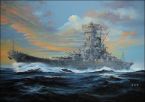
 ),...
),...  ) So Iīm not an anti America extremist. NOT AT ALL! But it seems to me that "American" and "overrated" just goes hand in hand.
) So Iīm not an anti America extremist. NOT AT ALL! But it seems to me that "American" and "overrated" just goes hand in hand. 
 Just one fact about me: one of my grandfathers was Jewish so if I would like an Anschluss I would probably land in a KZ. Before you come with "poor little guy" my other grandfather was a Nazi in the Wehrmacht. But that post is probably of a person I described above. And sorry this was 60 years ago but watch CNN and change the flag and it looks like a election campaign of your president nowadays with all the people around not raising their hands for the Hitlergruss but instead all with little flags.
Just one fact about me: one of my grandfathers was Jewish so if I would like an Anschluss I would probably land in a KZ. Before you come with "poor little guy" my other grandfather was a Nazi in the Wehrmacht. But that post is probably of a person I described above. And sorry this was 60 years ago but watch CNN and change the flag and it looks like a election campaign of your president nowadays with all the people around not raising their hands for the Hitlergruss but instead all with little flags. 



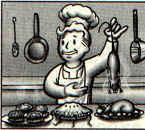






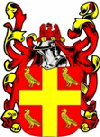




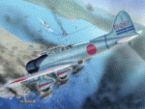
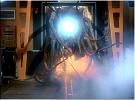
 New Messages
New Messages No New Messages
No New Messages Hot Topic w/ New Messages
Hot Topic w/ New Messages Hot Topic w/o New Messages
Hot Topic w/o New Messages Locked w/ New Messages
Locked w/ New Messages Locked w/o New Messages
Locked w/o New Messages Post New Thread
Post New Thread